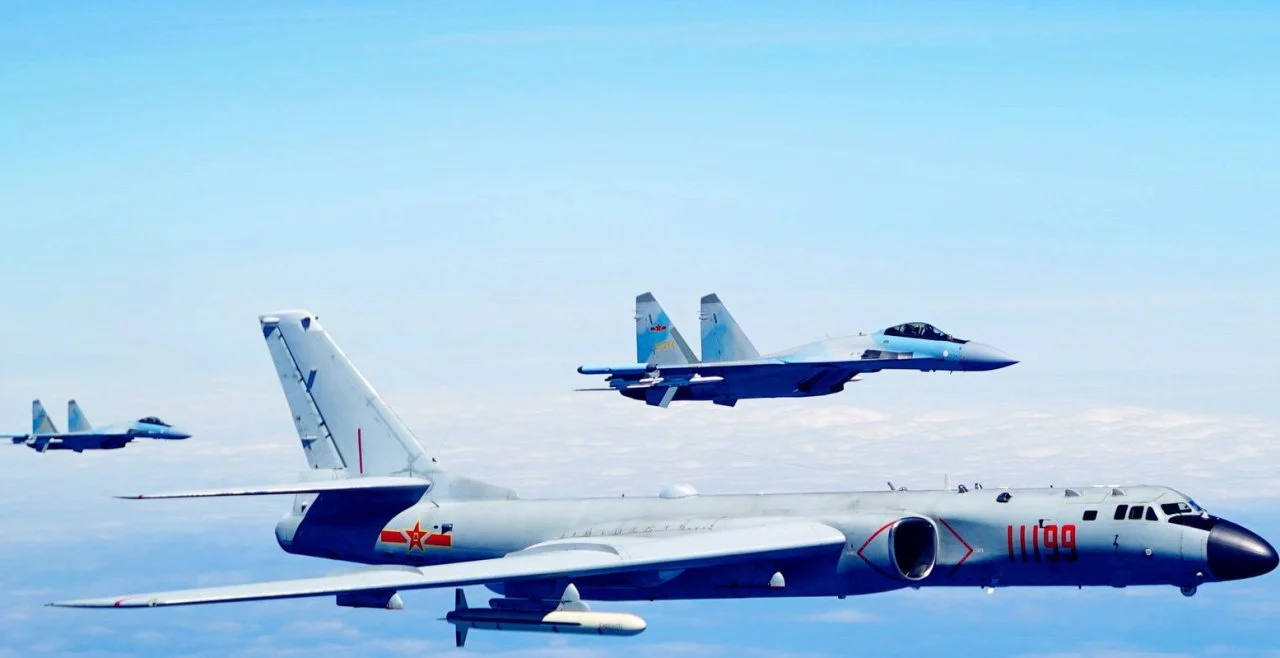Images have surfaced revealing what appears to be the first example of China’s new airborne early warning and control (AEW&C) aircraft, based on the four-engine Y-20 cargo plane. This development marks a significant leap in China’s AEW&C capabilities, as the nation transitions from smaller turboprop designs to a modern, large, jet-powered platform. China already boasts a considerable fleet of AEW&C aircraft, but most are smaller turboprop models. A domestically developed, jet-powered AEW&C platform, referred to colloquially as the KJ-3000, could augment or eventually replace the limited number of existing jet-powered KJ-2000 Mainrings, which are based on the Russian Il-76 airframe. The emergence of the Y-20-based AEW&C aircraft coincides with other major Chinese military unveilings, including two advanced combat jets and the official launch of the PLAN’s first Type 076 amphibious assault ship.
Reports have circulated for years about the development of a Y-20-based AEW&C aircraft. The current expectation is that this platform, potentially called the KJ-3000, is based on the upgraded Y-20B variant, first revealed in 2020. The baseline Y-20A cargo plane, developed by the state-run Xi’an Aircraft Company (XAC), first took flight in 2013. An aerial refueling variant, the Y-20U, is already in service, further showcasing the adaptability of the Y-20 platform.
The newly surfaced images offer a limited view of the KJ-3000’s design. It features a prominent circular radome on the rear fuselage, a characteristic of many AEW&C aircraft, including the KJ-2000, Russia’s A-50 Mainstay, and the U.S. E-3 Sentry. Additional domes on the forward fuselage and tail suggest sophisticated communication suites, similar to those found on the KJ-2000 and A-50. These systems likely enhance intelligence, surveillance, and reconnaissance (ISR) capabilities, alongside the primary radar system. China’s existing AEW&C radomes are fixed and employ active electronically scanned array (AESA) antennas for 360-degree coverage, unlike the rotating radomes on the A-50 and E-3. It remains to be seen whether the KJ-3000’s main radome will adopt a similar design or introduce new innovations.
A Y-20-based AEW&C platform offers several significant advantages over its predecessors. Its jet-powered design allows for greater speed, range, and endurance compared to turboprop models like the KJ-200 and KJ-500. Flying at higher altitudes, the KJ-3000 would provide superior radar coverage, particularly for detecting low-flying aircraft and missiles that might evade ground-based radars due to terrain. The larger airframe also supports a bigger crew, enabling longer missions and more complex operations. The potential addition of aerial refueling capability could further extend its reach and mission time. Notably, turboprop AEW&C aircraft with refueling probes have already been developed in China.
As a fully domestically developed platform, the KJ-3000 would be easier to maintain, upgrade, and sustain compared to the KJ-2000, which relies on Russian supply chains and is expensive to operate. The new platform could also be marketed internationally, expanding China’s footprint in the global defense market, as it has done with turboprop AEW&C aircraft sold to Pakistan.
AEW&C aircraft are critical assets for any modern air force, and the KJ-3000 is poised to play a pivotal role in the People’s Liberation Army’s (PLA) operations. These platforms extend China’s anti-access and area denial (A2/AD) capabilities, particularly around the mainland, Taiwan, and the South China Sea. They also bolster power projection in more distant regions. U.S. military officials have acknowledged the growing sophistication of China’s AEW&C fleet. General Kenneth Wilsbach, head of Air Combat Command, highlighted the integration of platforms like the KJ-500 with advanced fighters such as the J-20 stealth jet. “We’re relatively impressed with the command and control that was associated with the J-20,” Wilsbach remarked, noting the role of AEW&C aircraft in enabling long-range air-to-air missile engagements.
While details about the KJ-3000’s capabilities remain scarce, its development aligns with China’s broader ambitions to modernize and expand its military aviation capabilities. By leveraging the versatile Y-20 platform, the KJ-3000 promises to deliver enhanced speed, endurance, and technological sophistication to the PLA’s AEW&C fleet. As more information emerges, this aircraft is expected to solidify its place as a cornerstone of China’s air power strategy, providing critical support for both defensive and offensive operations.




